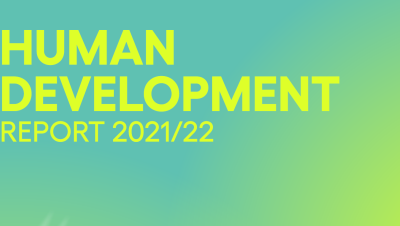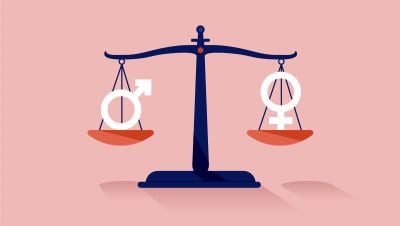This year’s World Statistics Day celebration has an added significance for UNDP: 2020 also marks the 30th Anniversary of the first Human Development Report (HDR) and its key measure of well-being, the Human Development Index (HDI).
The HDI was developed to challenge the idea that a nation’s progress could be assessed by its economic growth (usually measure by Gross Domestic Product). Now is not the place to highlight the shortcomings of GDP as a measure of human wellbeing, suffice it to say that Simon Kuznets, the Nobel Prize winning economist who helped develop the concept in the 1930s, explicitly warned the government not to use it as a measure of wellbeing. Yet that is precisely what started to happen around the world.
As was famously observed “Not everything we count counts, and not everything that counts is counted,” the HDI was published to steer discussions about development progress away from GPD towards a measure that genuinely “counts” for people’s lives.
Introduced by the Human Development Report Office (HDRO) thirty years ago to provide a simple measure of human progress – built around people’s freedoms to live the lives they want to - the HDI has gained popularity with its simple yet comprehensive formula that assesses a population’s average longevity, education, and income.
This office has always recognised the limitations of the HDI “a measure as crude as GDP” but not as blind to human lives. Over the years, however, there has been a growing interest in providing a more comprehensive set of measurements that capture other critical dimensions of human development.
To respond to this call, new measures of aspects of human development were introduced to complement the HDI and capture some of the “missing dimensions” of development such as poverty & inequality and gender gaps. Since 2010, HDRO has published an Inequality-adjusted HDI, which adjusts a nation’s HDI value for inequality within each of its components (longevity, education and income) and, jointly with OPHI, a Multidimensional Poverty Index that measures deprivations directly.
Similarly, the Office’s efforts to measure gender inequalities began in the 1995 HDR on gender, and recent reports have included two indices on gender, one accounting for differences between men and women in the HDI dimensions, the other a composite of inequalities in empowerment and well-being. Currently we are joining forces with UN Women to develop new gender-related human development composite indices by making a distinction between well-being and empowerment.
Other indices, statistical tables, and statistical dashboards have also been added to provide a more comprehensive perspective of the relevant data to assess countries’ human development.
Yet there is still much to be done. And HDRO is setting out on an ambitious agenda to rethink human development metrics.
First, we would like to introduce human development metrics to account for what the 2019 HDR referred to as “enhanced capabilities” - aspects of life, such as access to the internet, that are becoming more and more essential to life in the 21st Century.
Second, agency – people’s ability to have control over their own lives – is a crucial part of human development that needs to be measured. The current HDI speaks to a set of capabilities essential for basic well-being, but it does not encompass many of the things that enhance agency.
Third, many people expect the HDI to tell us more about the sustainability of human development in an era when human activity is pushing the planet’s systems to the breaking point. Very few people had even heard of climate change in 1990, nor predicted the collapse of global biodiversity that we are now witnessing. These areas – while very difficult to measure – are vital to humanity’s future.
We are working alongside experts from different disciplines – including sustainability science and earth system science – to better capture environmental and sustainability factors in our human development metrics.
Yet we must not let the perfect be the enemy of the good. The HDI, and metrics of human development more broadly, are meant as “signalling devices” that provide policymakers and citizens with information to evaluate choices and discuss development performance. Therefore, the expansion of human development metrics should be built on a foundation of reaffirming the original intent of the human development approach - as rough and ready measures of how countries fare on indicators that relate to human development and sustainable development goals.
In the end, the world still needs an index that can embrace the complexities of development but is also simple to understand and straightforward to interpret.


